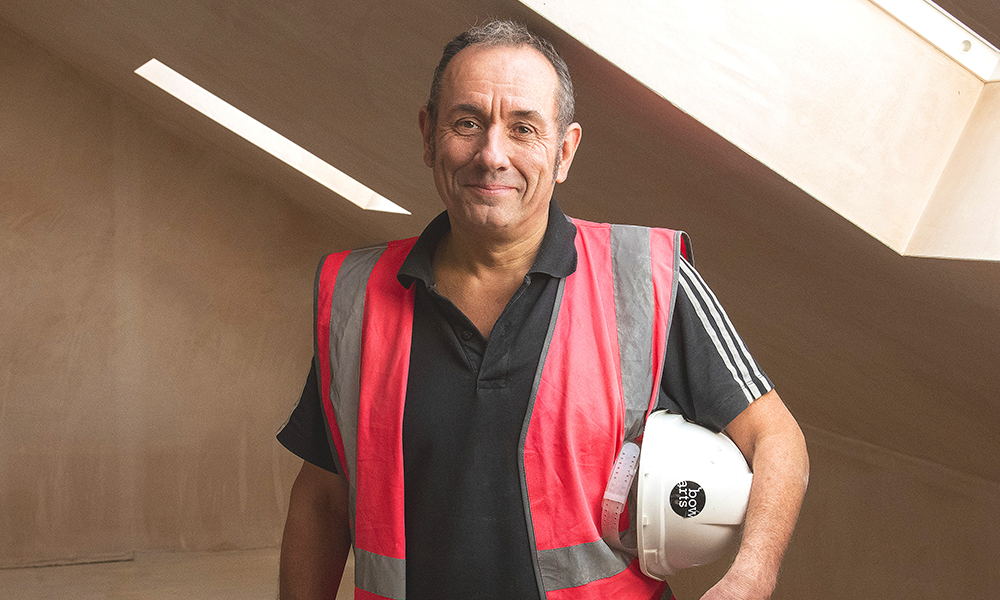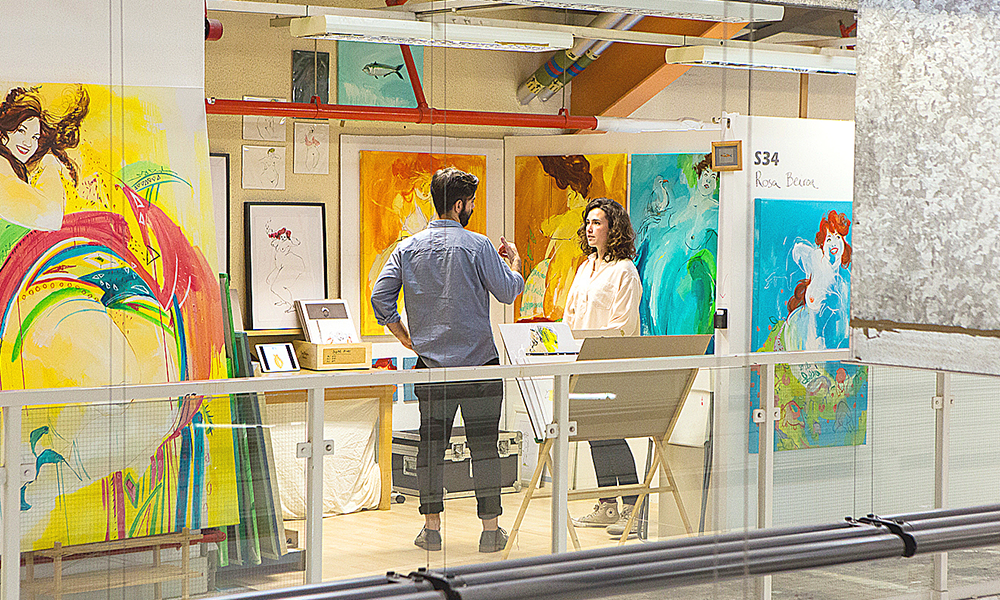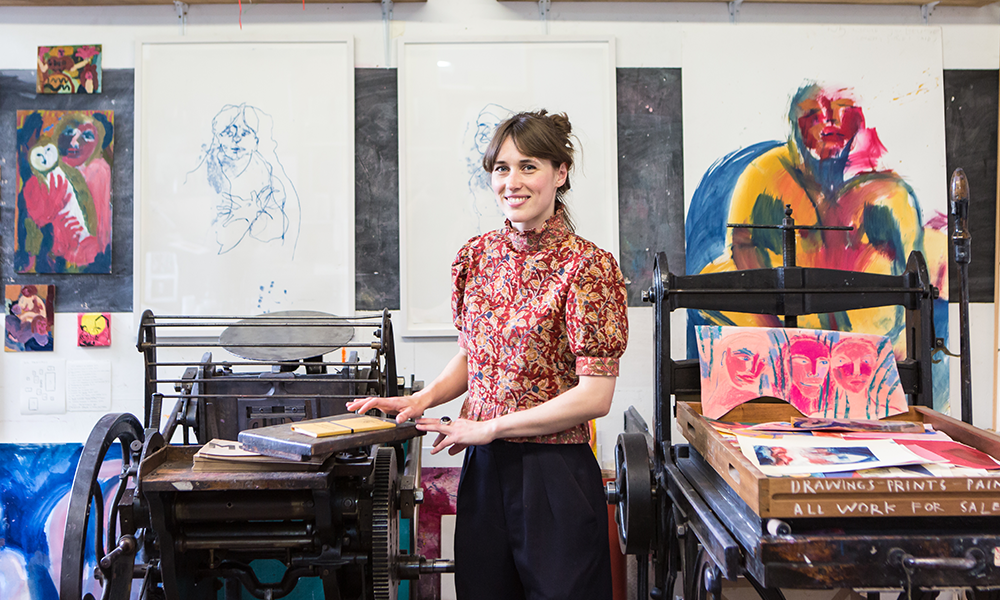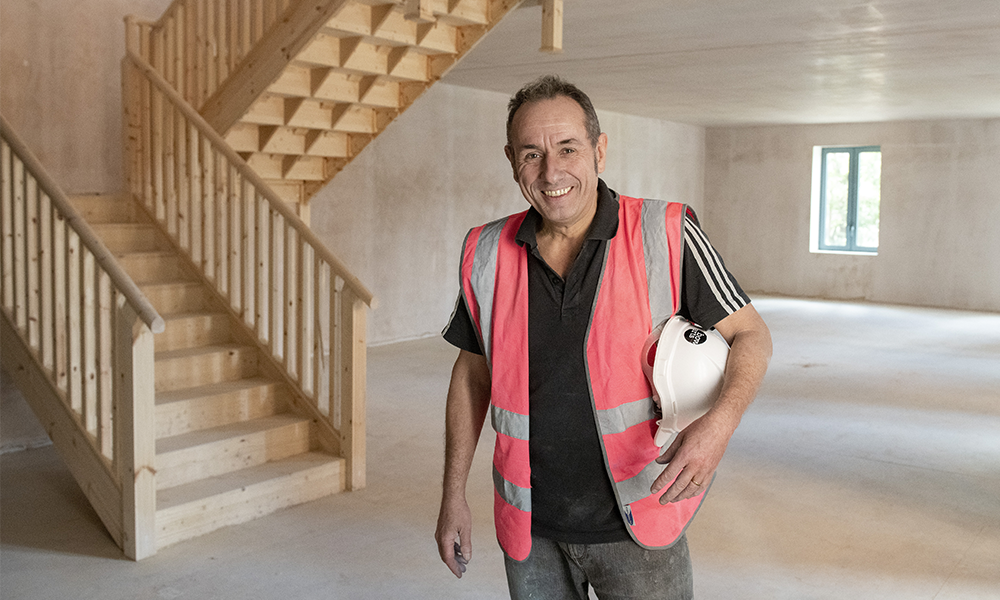See Laura’s pieces and others from Craft Central makers at its Open Studios and Winter Market
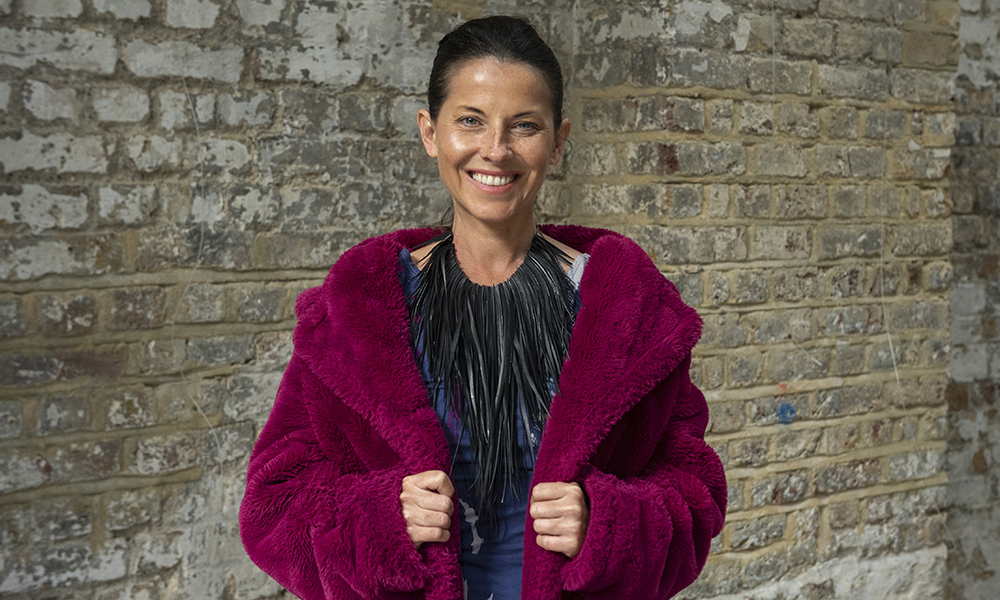
Subscribe to Wharf Life’s weekly newsletter here
BY LAURA ENFIELD
When Laura Zabo moved to Tanzania in 2015, she was seeking change.
Her business in Hungary had failed and she needed a new passion.
What she found there were dirty old tyres. She loved them.
“Africans recycle everything and, one day, I was walking through the local Maasai market and found some brightly painted sandals made out of car tyres,” said Laura.
“They were so pretty and colourful and I found this a brilliant idea – that such an unwanted material could become so useful.
“I realised I wanted to show the world that we can recycle tyres and we have to, because we just have too much waste.”
She immediately started buying supplies and tools and learning how to transform the rubber into wearable objects such as belts and shoes – sometimes working 15 hours without eating.
“I just felt like: ’Wow, this is the mission of my life,’.” she said. “I was sure, with my creativity, that I could make pretty items people would want.”
By the time she moved to London, jewellery was her focus and she began selling at markets in Spitalfields and Greenwich and at craft events in between day jobs in marketing and hospitality.
It revived the entrepreneurial spirit she had first discovered aged eight – selling beaded jewellery at school – but which had been dampened by the failure of her homoeopathy business.
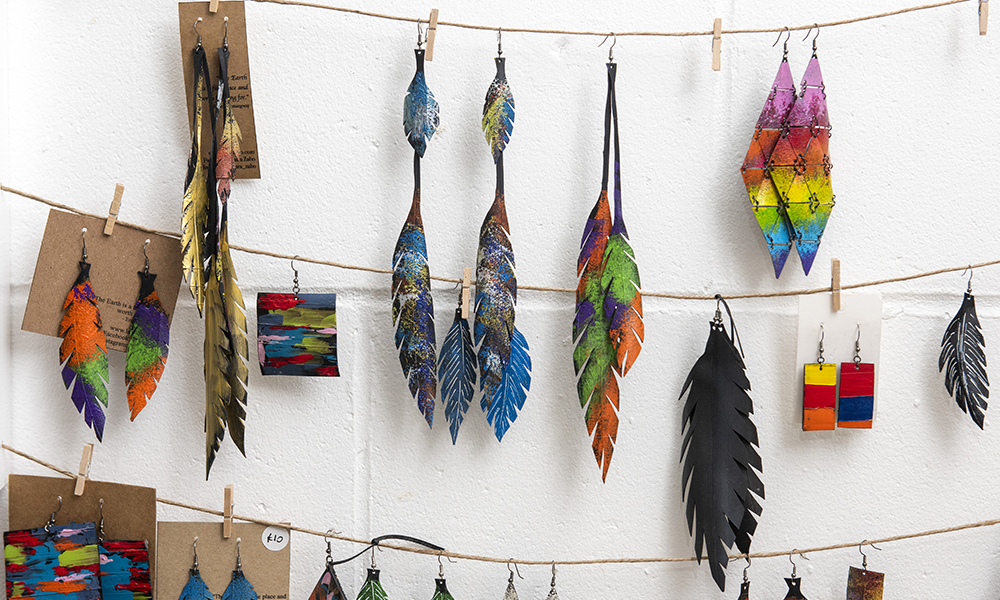
“When that happened I was really depressed and was just surviving because I really didn’t know what I should do with my life,” said Laura
“I moved to Africa to reset and find something interesting that I could really dedicate my life to.”
After she discovered it, London called to her because of the freedom it offered.
“I come from a much more conservative country – the UK really has the vibe of opportunities,” she said.
“If you come here and believe in something, you can make it happen.”
The 43-year-old has lived across the capital including in Lewisham and Margate – she’s now on a boat in West India South Dock.
But when it came to her business she realised she needed a more permanent base and landed at Craft Central on the Isle Of Dogs’ Westferry Road in February.
“I was making from home before, but it was really uncomfortable, after so many years,” she said.
“Sometimes I would finish working at midnight and the next morning there was rubber everywhere. I knew that if I had my own workspace, I could focus much more.
“I find the space at Craft Central so inspirational and I really like that the Isle Of Dogs is like a piece of countryside in London”
Her supplies mostly come from a tyre recycling firm but she often pops to Canary Wharf to collect supplies from NipNip’s bike servicing and repair shop at Westferry Circus.
You won’t find her pedalling though, as Laura isn’t a fan of cycling – or the cleaning required when tyres arrive.
“Everything is dirty and has to be sorted because each type of tyre has a different purpose,” she said.
“When I’m sorting them I get completely dirty and then the tyres have to be cut in half and soaked for a few hours in disinfectant before I start scrubbing.”
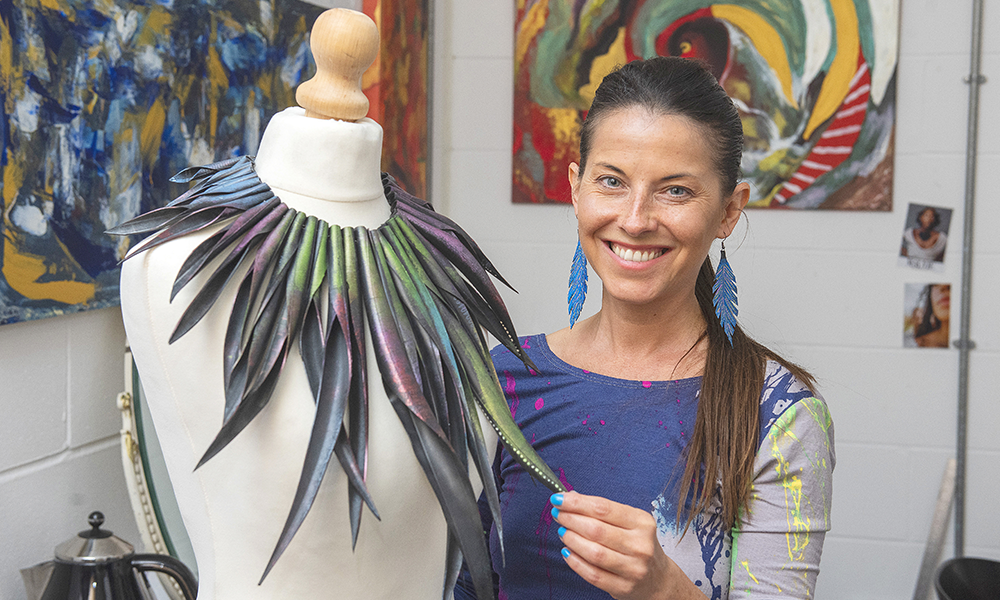
Once they are dry, the inner tubes are ready for crafting into delicate necklaces and earrings but the tyres, which she uses for belts, have to be painted to make them perfectly black.
Laura can make around 30 pieces a week and her biggest seller is the Curlywurly Necklace, which she said would be impossible to make from any other material.
Prices range from £12 for a pair of leaf earrings to £89 for her statement necklaces and Laura said it had been a conscious choice to charge as little as possible.
“I come from a very poor family and know how bad it is when you like something and you just don’t have money for it,” she said.
“I didn’t want someone to be unable to afford my pieces.
“Also, some customers are unsure how people will react if they buy recycled bicycle inner tube jewellery, so I don’t want the price to put them off.
“More sales means I can spread my message.”
It has been working. Sales have increased fourfold this year and Laura has been inundated with requests for collaborations and photoshoots.
“I am so happy people are valuing my items,” she said. “I really feel the buzz from every direction and like it is becoming something very popular.
“Obviously, this is what I wanted when I started this business, but for many years people laughed at me when I told them my job was to recycle tyres and said I was not normal.
“Now it’s becoming an industry and it’s brilliant.”
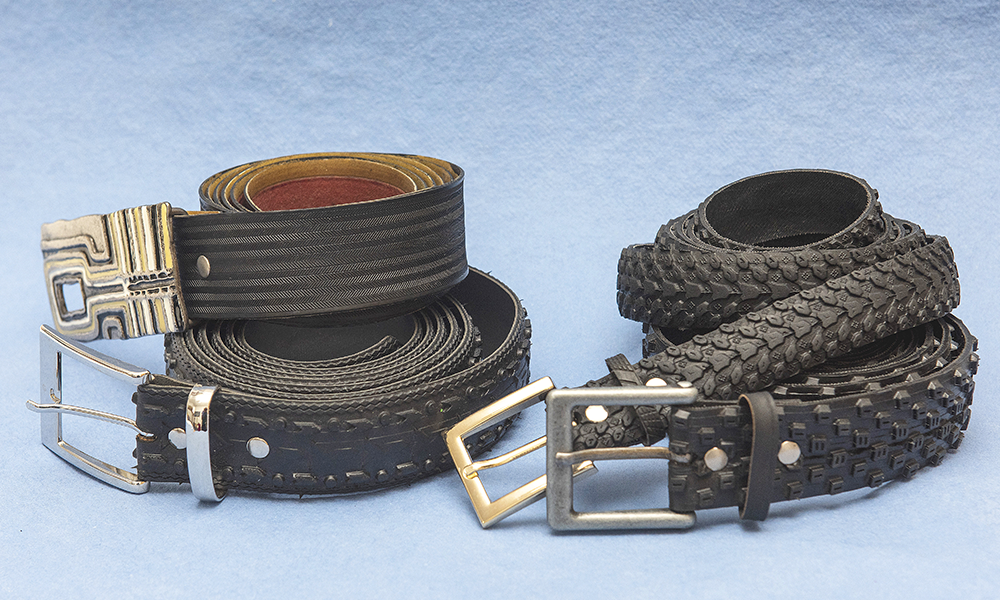
Laura believes her success is down to a change in her mindset.
“I have read about 80 books since November about business and personal development and feel much more focused on my goals,” she said.
“I think once your way is clear, you feel more stable in your journey and good things happen more easily.”
Unlike many makers who guard their processes, Laura is now keen to share hers widely.
“My next call is to open a shop and teach my techniques to make people realise anyone can make money out of upcycling,” she said.
“It has been a game-changer in my life. When I craft, it is like meditation.
“Even if you sell it very cheaply, the fact you created something and someone wants to buy it, will really change your life.
“Upcycling also teaches us what we throw away and that our main focus should be on creating instead of useless hobbies like shopping.”
Laura, who buys 95% of her clothes second hand, added: “I find fast fashion so useless and super stupid.
“People work so hard, then buy valueless items nonstop and it just doesn’t make any sense for me. I would love to inspire people to try crafting instead.
“I think every market should have one person who sells upcycled tyre jewellery.
“I hope to be the person who teaches them how to do that.”
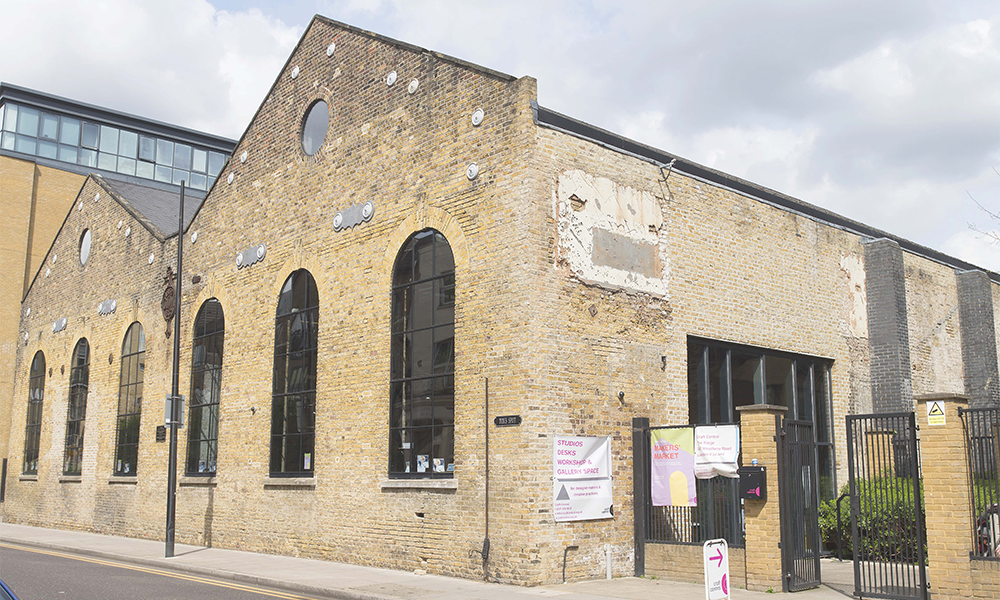
SHOP LOCAL – CRAFT CENTRAL OPEN STUDIOS AND WINTER MARKET
See the work of Craft Central experts, including Laura Zabo, up-close at Craft Central’s home at The Forge from November 19-20, 2022, 10.30am -5pm.
The charity will be hosting an Open Studios and Winter Market event, which is free to visit and includes Silphi ‘s Venetian coloured glass jewellery and Pon Studio’s playful homeware.
The gallery space will be full of items to browse and buy, including Frank Horn’s leather accessories, Sato Hisao’s pop-up cards and paper craft and other products such as home accessories, jewellery, fashion, prints, ceramics, stationery and textiles, from £2.50 to £500.
There will be drop-in, pay-what- you-can workshops from noon-4pm in badge making on the Saturday and Christmas decoration painting on the Sunday.
Also, Carb Club will host Paint Your Own Pieces ceramics workshops all weekend and, on the Saturday, Sarah Richards will run an upcycling DIY Christmas Jumper workshop for £15 adult, £10 child.
Both require pre-booking.
Read more: Discover Wilton’s Music Hall’s festive show for 2022
Read Wharf Life’s e-edition here
Subscribe to Wharf Life’s weekly newsletter here
- Laura Enfield is a regular contributor to Wharf Life, writing about a wide range of subjects across Docklands and east London




